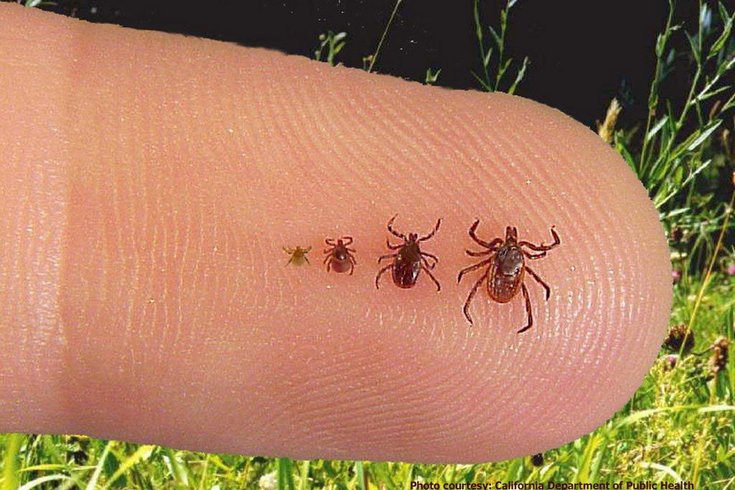
June 10, 2019
 Fairfax County (Va.)/via Flickr Creative Commons, CC BY-ND 2.0s
Fairfax County (Va.)/via Flickr Creative Commons, CC BY-ND 2.0s
Blacklegged ticks are quite small and could be mistaken for a freckle. From left to right: The blacklegged tick larva, nymph, adult female and adult male. When the blacklegged tick is in its nymph stage, the risk of transmission of Lyme disease is the greatest. Nymphs are tiny (less than 2 mm) and are difficult to see.
It is tick season again and it is expected to be another bad one. According
to the
Centers for Disease Control and Prevention, the number of people diagnosed with Lyme disease in the United States has
tripled since the late 1990s. And
here in Pennsylvania, Lyme disease affects thousands of residents every year.
Lyme disease is a bacterial infection caused by a bite from an infected tick. Symptoms can manifest up to a month after a tick bite. The Mayo Clinic reports that:
From three to 30 days after an infected tick bite, an expanding red area might appear that sometimes clears in the center, forming a bull's-eye pattern. The rash (erythema migrans) expands slowly over days and can spread to 12 inches (30 centimeters) across. It's typically not itchy or painful but might feel warm to the touch.”
Erythema migrans is a circular rash that can also expand to different parts of your body, not just the site of the bite. Other symptoms you may experience include fever, chills, aches, headache, stiffness and swollen lymph nodes. You may feel tired all the time.
When not caught and treated early enough, Lyme disease can lead to joint pain and inflammation, and even neurological and heart problems.
What is the best way to protect yourself from tick bites? (Sources include CDC, Mayo Clinic, Cleveland Clinic and Pennsylvania Department of Health.)
• Don’t walk in areas with tall grass, and when hiking, stay in the center of the path
• Use insect repellent with DEET• Make sure your dogs are protected against ticks, too
• Take a shower as soon as you get back from a hike in the woods or hanging out in any known tick-infested area – and check yourself thoroughly for any hanger-ons
• Have someone check your hair, scalp and any hard-to-reach places for ticks for you. Parents should check their children from head to toe
• To kill any ticks on your clothing, dry them on high for about 10 minutes.
Keep in mind that you are more at risk of contracting Lyme disease if the tick remained attached to you for at least 36 hours. If you find a tick on your body, use tweezers to pull it out carefully without crushing the body, and then use an antiseptic on the bite mark.
If you start to experience any symptoms of Lyme disease after being bitten, make an appointment with your doctor as soon as possible. In its early stages, it can be easily treated with antibiotics.